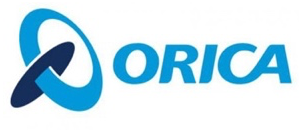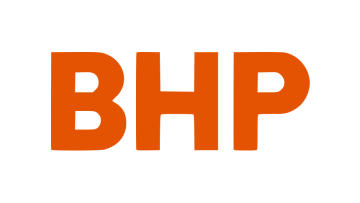Site Safety Inspection Checklist
The Essential Tool for Comprehensive Worksite Safety Assessment
Our free Site Safety Inspection Checklist assists safety managers in evaluating and enhancing workplace safety standards.
- Comprehensive coverage of 8 crucial safety areas
- Easy-to-use format for efficient inspections
- Helps ensure compliance with safety regulations
- Customizable to fit your specific workplace needs
- Developed by industry experts at SafetyIQ

What is a Site Safety Inspection Checklist?
A Site Safety Inspection Checklist is a structured tool designed to systematically assess various aspects of workplace safety. It covers key areas such as work environments, equipment condition, safety protocols, and regulatory compliance. Regular use of this checklist helps identify potential hazards, ensure adherence to safety standards, and maintain a secure work environment.
When to Use a Site Safety Inspection Checklist
Site safety inspections should be conducted regularly as part of a proactive safety management strategy. We recommend using this checklist:
- On a scheduled basis (weekly, monthly, or quarterly)
- Before commencing new projects or operations
- Following any significant changes to the workplace layout or processes
- After incidents or near-misses to prevent recurrence
How to use the Site Safety Inspection Checklist
- Download and review the checklist to familiarize yourself with its contents.
- Walk through your site, methodically assessing each area outlined in the checklist.
- Record observations, noting both compliant and non-compliant items.
- For any identified issues, document recommended corrective actions.
- Prioritize and implement necessary safety improvements.
- Maintain records of completed inspections for continuous improvement and compliance purposes.
Key Areas Covered in the Checklist
- Work Areas
- Personal Protective Equipment (PPE)
- Fire Safety
- Electrical Safety
- Chemical Safety
- Equipment and Machinery
- First Aid and Emergency Preparedness
- Environmental Controls
Benefits of Regular Site Safety Inspections
- Proactive hazard identification and risk mitigation
- Improved compliance with safety regulations
- Enhanced safety awareness among employees
- Reduction in workplace incidents and associated costs
- Documentation for safety performance tracking and improvement
FAQs
Site safety inspections should ideally be conducted by trained safety personnel or managers. However, involving employees from different departments can provide valuable insights and promote a culture of safety.
The frequency depends on your specific workplace and risk factors. Generally, we recommend monthly inspections, with more frequent checks in high-risk areas.
While our free checklist provides a comprehensive starting point, you may need to adapt it to your specific industry or workplace requirements. For a fully customizable solution, consider our complete safety management system.
Our checklist is designed to align with common safety regulations. Regular use and documentation of these inspections demonstrate your commitment to maintaining a safe workplace, which is crucial for compliance.
Enhance Your Safety Management with SafetyIQ
Why use SafetyIQ?
SafetyIQ’s Audits and Inspections Module transforms traditional solutions into a streamlined, standardized approach. We also take this proactive approach to the next level - predictability, by using the captured data to create configurable dashboards and actionable insights. Find out more.
Our Site Safety Inspection Checklist is just one component of our broader safety ecosystem.
How we support your safety initiatives:
- User-friendly digital tools for easy implementation
- Regular updates to align with changing safety standards
- Expert support to help you maximize the effectiveness of your safety program
How do we do this?
Audits and inspections are assigned to team members with context notes, dates, and reminders to make sure nothing gets missed. The audit or inspection can be taken from any device (e.g. mobile phone, tablet) and once completed, you can assign corrective actions where necessary.
Remediation orders are assigned, given a due date, and forwarded to the right person. The progress can be tracked and the completion can be confirmed. Any action not performed in time will automatically generate an alert for follow-up.
Captured data feeds directly into reporting dashboards, allowing you to understand trends and problem hotspots. With this visualised data, users can know where to focus their efforts to make continuous safety improvements.
Benefits of digital solutions:
- Efficiency and Time Savings: Digital solutions streamline the audit process by eliminating the need for manual paperwork, data entry, and storage. With a digital platform, auditors can quickly and easily capture and record audit data, generate reports, and share information across teams. This saves time, reduces administrative burdens, and allows more efficient auditing processes.
- Accuracy and Data Integrity: Paper-based audits are susceptible to errors, such as illegible handwriting or misplaced documents. Digital solutions provide standardized forms and automated data entry, minimizing the risk of human errors.
- Centralised Data Storage and Accessibility: Storing audit data digitally eliminates the need for physical storage space and the risk of document loss or damage. Digital platforms provide centralised storage, making it easy to access and retrieve audit records whenever needed. This accessibility enables historical trend analysis, benchmarking, and the ability to track and monitor corrective actions over time.
- Advanced Reporting and Analytics: Digital audit solutions offer powerful reporting and analytics capabilities. Data can be analyzed to identify trends, patterns, and areas of non-compliance more effectively. customisable dashboards and visualisations provide a comprehensive overview of audit findings, allowing for data-driven insights and strategic decision-making.
- Integration with Other Systems: Digital audit solutions can be integrated with other business systems, such as compliance management software, document management systems, or incident reporting tools. This integration streamlines data exchange and enhances the overall HSE management process, promoting a holistic approach to risk mitigation and compliance.
- Sustainability and Environmental Benefits: Shifting to digital audits reduces paper consumption, printing, and transportation associated with traditional audits. This contributes to environmental sustainability efforts, reducing the organisation's carbon footprint and promoting a greener approach to HSE management.
Real Results Experienced by Our Customers:
Along with productivity improvements, companies have seen insurance premiums and workers' compensation costs reduced.
Palfinger saw their Workers Comp direct cost alone reduced by almost one million dollars over 2 years due to their robust safety management system.













